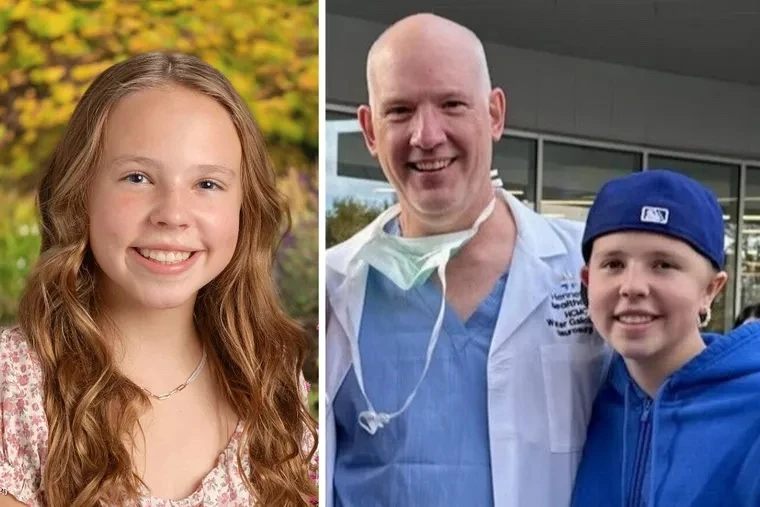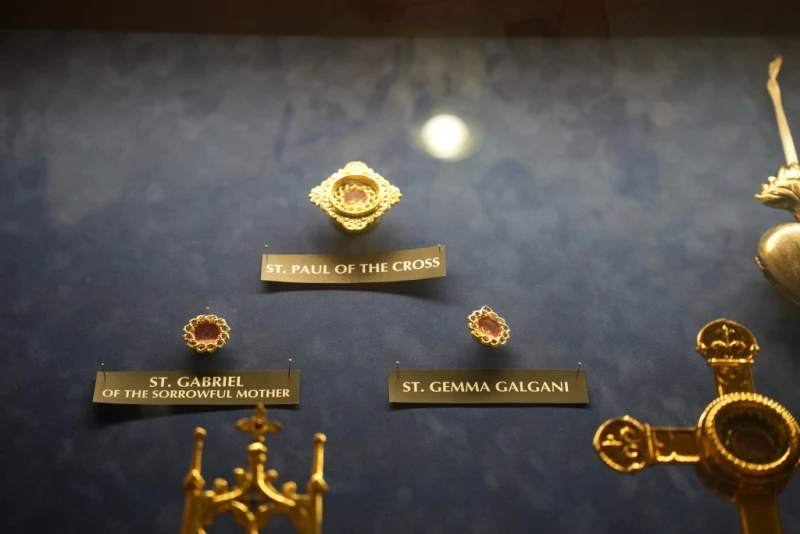

Annunciation School shooting survivor Sophia Forchas in a photo before the incident and then posing with neurosurgeon Dr. Walt Galicich at Gillette Children’s Hospital in Minneapolis on a very happy day as she goes home to be with her family on Oct. 23, 2025. / Credit: Photo courtesy of the Forchas family
National Catholic Register, Oct 24, 2025 / 12:02 pm (CNA).
Twelve-year-old Sophia Forchas is finally home after spending 57 days in the hospital with severe injuries sustained from the deadly shooting on Aug. 27 at Annunciation Catholic Church in Minneapolis during the first school Mass of the year that claimed the lives of two students.
Sophia received a fond farewell outside the hospital on Oct. 23.
In a statement posted to the family’s GoFundMe page, Sophia’s parents, Tom and Amy Forchas, wrote: “Today marks one of the most extraordinary days of our lives! Our beloved daughter, Sophia, is coming home!!”
Speaking with gratitude for the team of doctors that worked diligently to save their daughter, the couple wrote: “We thank you from the depths of our hearts. We will never forget your world-class care that sustained her. Your commitment carried us through.”
Sophia still has a long road ahead with outpatient therapy, but her parents said “our hearts are filled with indescribable joy as we witness her speech improving daily, her personality shining through once more, and her ability to walk, swim, and even dribble a basketball. Each step she takes is a living testament to the boundless grace of God and the miraculous power of prayer.”
Archbishop Bernard Hebda of the Archdiocese of St. Paul and Minneapolis told the National Catholic Register, CNA’s sister news partner: “I celebrate with the Annunciation community the return to home of Sophia Forchas. It was very moving that she was able to join us last evening for the daily 9:00 rosary outside of the Church. She and her father thanked the community for the many prayers that they have received throughout the time that Sophia had been in the hospital and at the rehabilitation center. Please join me in continuing to pray for the ongoing recovery of all of those affected by the tragedy at Annunciation, and especially for the families and loved ones of Harper Moyski and Fletcher Merkel.”
In a news conference Sept. 5, neurosurgeon Dr. Walt Galicich of Hennepin County Medical Center told reporters that in treating Sophia’s injuries he would attempt to “go through the normal brain to get there” and potentially cause more damage. Given the pressure in her brain, Sophia’s survival was extremely low.
The neurosurgeon led a team in performing a decompressive craniectomy, which removed the left half of her skull to allow the pressure in her brain to be relieved.
“If you had told me at this juncture that, 10 days later, we’d be standing here with any ray of hope, I would have said, ‘It would take a miracle,’” Galicich said tearfully to reporters back in September.

Sophia’s mother, who works as a pediatric nurse in the critical care unit at the hospital where the victims were taken, had no idea that it was her children’s school that had been attacked that fateful day. She initially had no idea that one of the three patients was her own daughter.
Sophia’s younger brother also witnessed the school shooting that day; by the grace of God, he was left unscathed, though he is still suffering from the trauma, given the horrific event and his sister’s dire injuries.
After Sophia’s 57-day stint in the hospital, Galicich gave his young patient a big hug as she walked out of the Hennepin County Medical Center to cheers and applause from her family and classmates. Even the city’s police chief was present, taking her on a ride through the city in a stretch limo to mark the occasion.
Speaking to The Minneapolis Star Tribune, Police Chief Brian O’Hara called Sophia’s homecoming “nothing short of a miracle.”

Ecstatic parents Tom and Amy also noted how crucial prayer was in their daughter’s healing, writing in their statement: “Those prayers came from family, friends, and countless souls around the world; many of whom have never met Sophia, yet lifted her spirit with unconditional love. Your prayers have been a wellspring of comfort, hope, and healing for our entire family. We are certain that God heard every single one.”
The Forchases expressed condolences to the families who lost their children during the shooting, saying: “We continue to pray for those whose lives were tragically lost on that heartbreaking day. May their memory be eternal.”
“We also hold close those who were injured and bear lasting scars, and the families and loved ones forever changed,” the Forchases continued. “May God grant healing, consolation, and his peace to all who grieve. To those whose hearts are hardened in despair, may the grace of the all-Holy Spirit soften them. We pray that the Trinity fill the world with compassion and love.”
This story was first published by the National Catholic Register, CNA’s sister news partner, and has been adapted by CNA.
Read More

